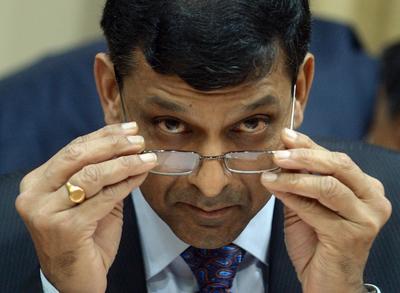Recent research, however, suggests that the myth of a ‘comfortable level of reserves’ is, at best, doubtful, at worst, misleading.
The elusive comfortable level of reserves depends on the level of reserves of your reference group (the ‘keeping up with the Joneses’ effect). Having deeper reserves than your neighbour may signal that your neighbour is the better target for foreign-currency speculative runs. Alternatively, this may be the outcome of hoarding in attempts to delay real appreciations that may hurt relative competitiveness, leading to ‘hoarding wars’ between exporters, attempting to keep their export market shares in overseas countries.
South Korea presumed prior to the global financial crisis that having international reserves at about 35 per cent of GDP was ‘comfortable’. Yet, they found in 2008–09 that it was not enough to abate financial panic — it took the unprecedented US Federal Reserve swap extended to South Korea to mitigate the panic. The lesson: South Korea overlooked the key importance of balance sheet exposures. At times of panic and flight to quality, the provision of (preferably elastic) swap lines by the supplier of global liquidity acting as the ‘buffer of last resort’ is the ultimate stabiliser. The outcome was that South Korea adopted prudential regulations (in line with economists Valentina Bruno and Hyun Song Shin’s recommendations).
Chances are that international reserves covering short-term hard-currency debt, reaching around 15–20 per cent of GDP, may provide a ‘precautionary buffer’ dealing with a typical exposure of an emerging market. Yet, this may not suffice to cover tail risks of the type exposed by the global financial crisis, a crisis with uncertain duration, and would not suffice to cover a run on the domestic banking system at times of internal instability.
Commodity-exporting countries have found that adding sovereign wealth funds above a ‘precautionary buffer’ of international reserves is advantageous. In the case of India, however, this recommendation will likely not fit.
Reserve Bank of India (RBI) Governor Rajan’s reference to China is intriguing — Chinese hoarding took off in 2001, more than tripling its ratio of international reserves to GDP by 2010. This took place during a prolonged spell of running current account surpluses and GDP growth reaching about 10 per cent a year. Chances are that this unprecedented reserve accumulation was the outcome of mercantilist motive (delaying the on-set of real appreciation, prolonging export led growth of manufacturing), as well as sporadic massive inflows of capital. These developments led to the growing concerns regarding the unintended consequences of global imbalances.
The global crisis put an abrupt end to these imbalances, and one doubts the feasibility and desirability of a strategy of massive hoarding foreign exchange reserves at times of global deflationary pressure and underemployment in numerous OECD countries. Also doubtful is the degree to which such a strategy fits India — underinvestment in infrastructure and labour-market rigidities have prevented India from exploiting its manufacturing potential. These bottlenecks would not be resolved by accumulating reserves.
Furthermore, the much lower saving rate in India and its tendency to run current account deficits does not support massive hoarding of the Chinese type. For sure, Rajan is aware of these factors — he noted that, instead of building just reserves, there is a need to focus on creating a policy environment that boosts investor confidence. Chances are that dealing with the infrastructure deficit of India needs much more than upgrading the RBI’s policies, or upgrading India’s reserves. Exploiting fully India’s manufacturing comparative advantage requires trimming costly labor market regulations, where high costs of firing reduce labor hiring. Access to reliable electricity and transportation networks are also necessary conditions for thriving manufacturing. India needs investment in efficient railway, highway, and air-cargo systems, integrated smoothly with navel ports and airports, with minimal red-tapes associated with export/import clearings.
The challenges associated with massive hoarding of international reserves are well known: sterilisation is needed to mitigate inflationary pressure, leading to quasi fiscal costs and potential monetary instability. China’s history suggests that there are ways to manage it, but none offers a panacea, and it’s too early to judge the degree to which dealing with past credit expansions in China will end with a soft landing. One also doubts whether China’s experience can or should be replicated by India — their fundamentals and institutions differ.
Yet, Indian households follow a decentralised version of Rajan’s comments, hoarding massive levels of gold (with an estimated market value of US$1.16 trillion in November 2012). The gold position of the private sector reflects both tradition and possible under-banking in India. Chances are that better provisions of accessible, stable and secured banking services should allow substituting these large and probably wasteful private gold positions with higher hoarding of international reserves by the RBI. Better provisions of banking services in India is indeed a worthwhile goal for the country, and the Reserve Bank should facilitate such a process. Yet, this should be done not to match the reserves of China but to improve the provision of safer and cheaper banking services.
Joshua Aizenman is the Dockson Chair in Economics and International Relations at the University of Southern California and a Research Associate for the National Bureau of Economic Research, Cambridge, Massachusetts.


EUR/USD: U.S. and euro zone data will aid investors in gauging the pulse of the global economy for the upcoming trading week, however, crisis in the Ukraine threatens to spoil any positive improvement. Steadying prices and solid retail sales are expected to boost the U.S. dollar versus the euro, despite strong data coming out of Europe. In an expected announcement this week, the 18 countries that comprise the euro zone report that economic output has increased at its strongest rate in three years. The pair saw a slight decline at the close of market trading Friday, down .03per cent, but investors will be wary if indeed stiffer penalties and sanctions are imposed due to the Ukraine crisis.